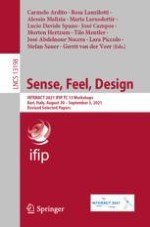This book contains a series of revised papers selected from 7 workshops organized by 18th IFIP TC 13 International Conference on Human-Computer Interaction, INTERACT 2021, which was held in September 2021 in Bari, Italy. The 15 papers included in this volume were carefully reviewed and selected from 30 submissions. They show the design of interactive technologies addressing one or more United Nations' Sustainable Development Goals, to deal with evolving contexts of use in today’s and future application domains and its influence on human-centered socio-technical system design and devel-opment practice, share educational resources and approaches to support the process of teaching and learning HCI Engineering (HCI-E), share educational resources and approaches to support the process of teaching and learning HCI Engineering (HCI-E), and address and discuss geopolitical issues in Human-Computer Interaction as a field of knowledge and practice.
